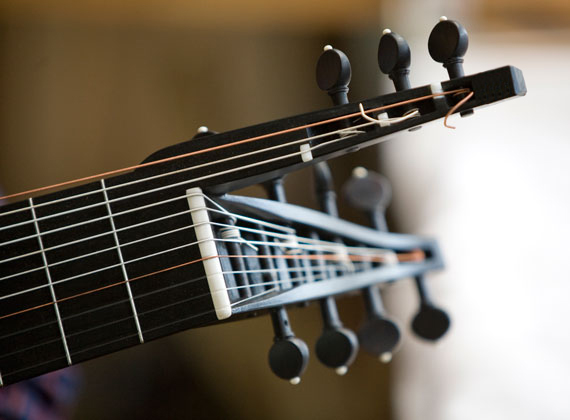The Nut
The passage from the neck to the peg box of the liuto forte is on a sharper angle than that of a guitar. To hinder the noise of friction while tuning, the grooves in the nut which hold the wound strings are fitted with gold brass or high-grade steel.



